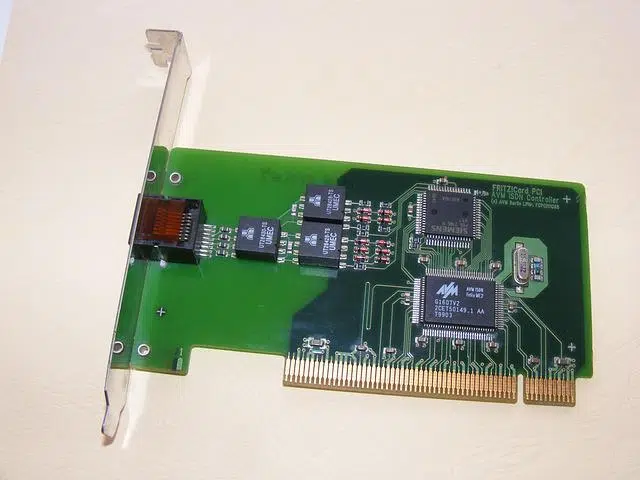
A PCI slot is an opening on the motherboard that allows the connection of various types of cards.
A slot is an opening or a slit . Coming from the French rainure , the term is usually used to refer to the channel that allows a piece to be inserted or assembled .
PCI , meanwhile, is an acronym created from the English expression Peripheral Component Interconnect (in our language, Peripheral Component Interconnection ). This is the name given to a bus that makes it possible to connect accessories or components to the motherboard of a computer.
What is a PCI slot
A PCI slot , therefore, is an open space on a motherboard (also known as motherboard , motherboard , motherboard or mainboard ) used to connect expansion cards . Before moving forward, it is important to clarify several concepts.
A bus is a system made up of cables, integrated circuits, capacitors, resistors and other elements that enable the transfer of data between the parts of a computer. An expansion card , on the other hand, is a device with chips and controllers that is used to increase the capabilities of a computer.
Types of PCI slots
Like almost all concepts belonging to the field of computer technology , PCI has a certain degree of complexity that prevents us from defining it simply by explaining the meaning of its acronym. For now, a first classification shows us at least three types of PCI slots: 64-bit, 32-bit and PCI-X .
The first and second refer to the bus width , that is, the amount of information that can be transferred at a time . Let's imagine that a group of people try to put out a fire by filling a bucket with water and passing it from the source to the focus: the volume of the bucket limits the amount of water that passes at a time, as does the width of the bus. Originally, the 64-bit PCI slot was less common on PCs than on Macintosh computers, and in fact some companies no longer make them. At first glance it is identified because it has a short segment between two long ones.
Between 32-bit PCI slots and PCI-X slots there are a couple of differences worth mentioning. First, 32-bit has only two segments, while PCI-X has three (the third is of medium length and is located on the left). Backwards compatibility is a concept that we must explain before continuing: it means that a device is capable of working with an older one, or that a program can open files saved in a previous version, among other possibilities. Well, PCI-X is backward compatible with 32-bit PCI .
Note that the same does not happen in the opposite sense: it is not possible to connect a PCI-X card in a 32-bit PCI slot, something that becomes evident due to the lack of the third segment that we mentioned above, since all its connectors would be ignored.
Types of expansion cards
In the PCI slot , PCI cards are inserted. There are multiple types of expansion cards that can be plugged into the PCI slot.

Cards that plug into a PCI slot can be graphics, network, or other types.
Many graphics cards ( video cards , video cards , video adapters or display adapters ), for example, can be inserted into the PCI slot. This type of expansion card processes the data it receives from the CPU and converts it into information that the monitor can represent.
The PCI slot can also receive the network card ( network adapter , network card ), to mention another possibility. This component is used for the computer to connect to a computer network .
